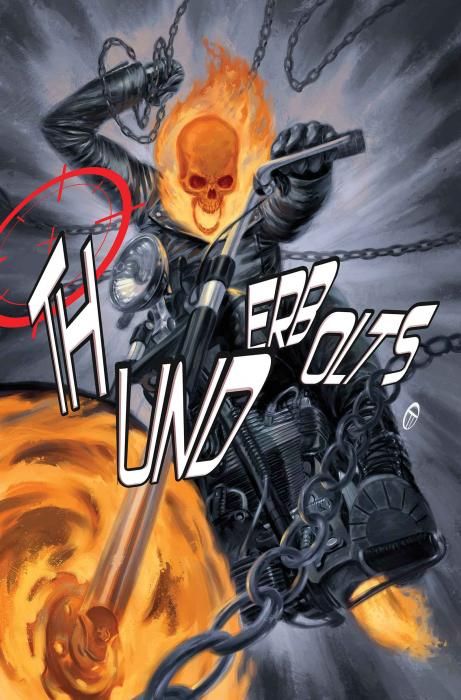Just in case anyone dared to think that the Thunderbolts were lacking in sulky attitude and firepower, Charles Soule and Carlo Barberi add another heavyweight solo player to the team in "Thunderbolts" #20.NOW.
The lead-in scene at the Petoskey Stone Diner feels clunky and exposition heavy, but there are some character moments, especially with Deadpool, who hogs the best lines as usual. This setting change does efficiently establish a new base of operations for the team, and with the roster shake-up, "Thunderbolts" #20.NOW is a good jumping-on point for new readers.
Like his new team members, Johnny Blaze isn't known for long-term teamwork, but a new face still shakes up the team dynamics a little. Impressively, Soule even concocts a believable reason for Johnny Blaze to join the team. For Red Hulk's team management, it does make sense to add someone else besides Mercy and Red Leader -- dubious assets in terms of their loyalties -- with abilities beyond physical dexterity and toughness, even if Blaze characterizes himself as "an ass-kicker type."
Although Ghost Rider has one of the most impressive power sets in the Marvel universe, Soule aims to make him relatable. As Soule characterizes him, Blaze feels like any other young man, hungry to prove himself. Ghost Rider's entrance scene has him dealing with an unpleasant journalist, and the beats of silence following her passive-aggressive long-winded question are excellent comic pacing. The cliffhanger is also classic fun, although predictable in retrospect. Soule's continues to maintain a breezy, easy tone and offbeat atmosphere, which feels refreshing for a team of antiheros, bruisers and undeniable villains.
Barberi's artwork has a nice subtlety in the facial expressions that plays well with Soule's pacing, but his approach to rendering faces doesn't have enough variation, to the point that it can be difficult to distinguish between the blondes, Flash Thompson and Johnny Blaze, when their faces look human.
The only major fight scene, which takes up three-quarters of a page, is cluttered in composition and oddly flat. This is partly due to Silva's color palette. A lot of red and black is unavoidable due to the character's existing costumes, but Barberi's sparse backgrounds and Silva's use of ill-suited contrasting cool tones only further emphasize the lack of variation and interest in hue.
The artwork doesn't evenly match the Soule's handling of the script, but overall, "Thunderbolts #20.NOW" is a solid introduction to the series and to Soule's deceptively casual and fun vision for the team, and the plot promises to go to even more exciting places next month.

